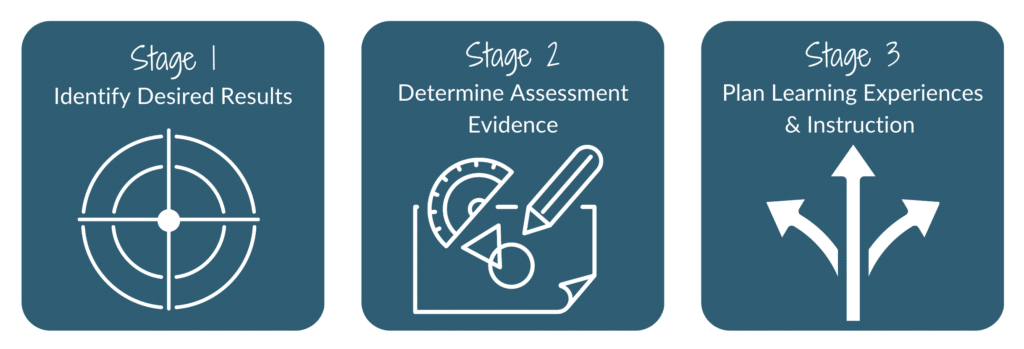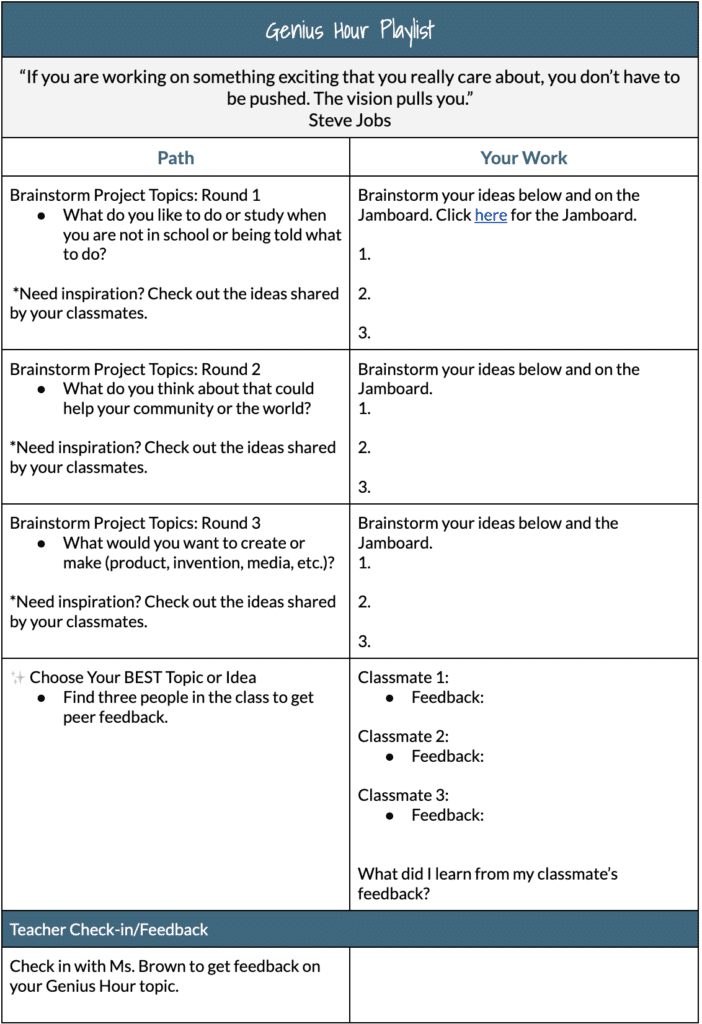The playlist, or individual rotation model, is a highly effective blended learning model that empowers students to take ownership of their learning by giving them control over the pace and path of their learning. This model presents a sequence of carefully curated learning activities tailored to each student’s unique needs and abilities, allowing them to progress toward specific learning objectives at their own pace.
Why Would a Teacher Use the Playlist Model?
Students need variable time on task. The playlist model is perfect for any learning activity or sequence of activities where students benefit from controlling their pacing. For example, some teachers use a playlist to guide students through a complex multistep process, like a project or a formal writing assignment. Other teachers build entire units in a playlist, recognizing that students acquire and process information at dramatically different rates. Still, others present a learning cycle, like the 5Es instructional model, in a playlist to give students more autonomy and agency as they work through the inquiry cycle.
Teachers can spend more time personalizing learning for individual students. One of the key advantages of the playlist model is that it allows teachers to spend more time connecting with and coaching individual students rather than guiding the entire class through a whole group lesson. As teachers meet with individual students at critical moments in the playlist, they can use that time to discuss the student’s progress, look at their work and formative assessment data, making the necessary adjustments to their playlist to ensure they continue making progress. Some students may benefit from more review and practice or working with a partner who is excelling in an area to access peer support. They may need more instruction, support, scaffolds, or feedback to continue progressing confidently. The teacher can make these additions or modifications during their conferencing sessions with students, making personalized learning more achievable and sustainable. Ultimately, the playlist or individual rotation model is a powerful tool for creating personalized learning experiences that engage, motivate and empower students, allowing them to achieve their full potential.
How Should a Teacher Approach the Design of a Playlist?
Designing a playlist can be daunting. I suggest teachers use backward design to structure their approach to creating a playlist. Backward design ensures that the learning objectives or desired results are aligned with the assessment strategy. It also creates clarity about the path of a playlist, so every learning activity moves students toward the learning objective or desired result.

What do you want students to know, understand, or do at the end of this playlist?
How will you measure progress toward learning objectives? What assessment strategy will you use?
What instruction and learning activities will help students make meaning or progress toward learning objectives? How can the playlist support them in applying what they are learning?
How Can Teachers Manage Self-pacing Effectively?
Self-pacing is a key benefit of the playlist model, so teachers need a strategy for tracking student progress. I recommend creating a spreadsheet with a column corresponding to each item on the playlist. For example, in a coaching session this week, a teacher wanted to create a genius hour playlist that students could work through during the spring semester.
Once we designed the playlist, we created a corresponding spreadsheet where she could track student progress during her “teacher check-ins.” That way, when she meets with students to discuss their progress and provide personalized feedback, she can track their progress on her spreadsheet and make specific notes related to that student’s work.
As the class works on this playlist, the spreadsheet provides a quick view of each student’s progress. That way, if a student is not making progress or is significantly behind the rest of the class, the teacher can identify who may need additional support.
How Do I Build Collaboration Into My Playlist If Students Are Self-pacing?
In addition to a spreadsheet that teachers can use to track student progress and document their feedback, they can use a public tracking system to help students see where their peers are in a playlist. At the elementary level, this might be posting the list of learning activities horizontally across a whiteboard and asking students to move a magnet with their names to the activity they are working on in each class. At the secondary level, teachers can use a digital tracking system that they or their students update at the start of each class to signal where they are in the playlist. That way, teachers can include collaborative tasks and discussions in the playlist because students can quickly identify who in the class is at the same point in the playlist. They allow students to group up for these offline activities.
If teachers have concerns about a public tracking system, they can use their whiteboard to create a space where students can add their names if they need a partner for a particular activity. For example, looking at the genius hour playlist above, when students reach the point when they need to gather peer feedback on their topic ideas, they can write their name on the board or add a post-it note to a specific location in the classroom, so other students know they are ready for feedback. That’s why it’s critical to have a system to create visibility for those moments in a playlist when students are looking for a partner or group to complete a learning activity.
Ultimately, my advice when working with teachers to design any blended learning experience is to balance the online with the offline learning activities and the individual with the collaborative tasks. This blend of learning activities will give students a much-needed break from the screen and opportunities to work with their peers, developing critical soft skills.
Teachers interested in learning more about the playlist model can check out my book, The Complete Guide to Blended Learning, and join me for my first-ever synchronous training series for teachers and coaches!




3 Responses
Hello Dr. Tucker,
I love the post! Would you say that this blended learning model is the version that is utilized by the Modern Classrooms Project? I’ve tried finding resources to help with self-pacing but I struggle because most are specified for single subject and I teach elementary where multiple subjects are taught throughout the day. Any thoughts or pointers on trying to adopt self-pacing in elementary? Obviously, you don’t want to do only one thing for everything because that can lead to other problems but I am just wondering how you would approach this?
Hi Cory,
Yes, MCP teachers can use playlists with students to allow self-pacing through units!
I would suggest thinking of your content in blocks. Most of the elementary teachers I coach teach an ELA, math, and science/social science block. I would begin by identifying the block that might benefit most from variable time on task or the subject that has the most diversity of skill and start there. Then you can create a playlist for that subject block and pull small groups (based on their data/progress) to provide differentiated instruction and support while the rest of the class self-paces through the playlist.
I agree, we do not want little ones on the computer all day, so choosing one block to start with is a good idea.
I hope that helps!
Take care,
Catlin
Very helpful!